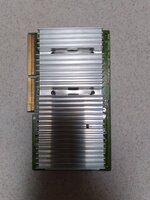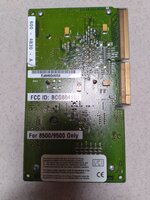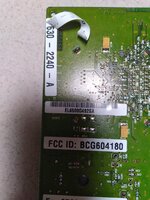I pulled an old PM 7500/100 out of storage a couple of weeks ago, and I found that I had lost/thrown out the keyboard, mouse, and Apple monitor. Using a DB15 to VGA adapter, I connected the Mac to a monitor. It powered up to the welcome screen showing system 8.(something). I ordered a Wombat USB/ABB adapter which arrived today. I attached the adapter and a USB keyboard and mouse. After applying power, I got no chime and no video. The HDD did start spinning and I could hear the heads shifting across tracks for about 5 seconds. Then nothing else. I detached the Wombat adapter with no change. One by one I disconnected the HDDs, the FDD and CDROM drive - no change. The PRAM battery is dead. I unplugged the processor board, pressed and held the power switch, waited 10 minutes and jumpered in 3.6V to the PRAM battery. Still no change. I checked the voltages at the PSU connections to the main board; I got 5V, 12V -12V, 3.3V and 3.6 +/- 5%.
Am I correct in expecting a chime even without a boot drive connected. Is there a schematic available that I could use in troubleshooting? Are there any suggestions on what I should try next?
Am I correct in expecting a chime even without a boot drive connected. Is there a schematic available that I could use in troubleshooting? Are there any suggestions on what I should try next?





